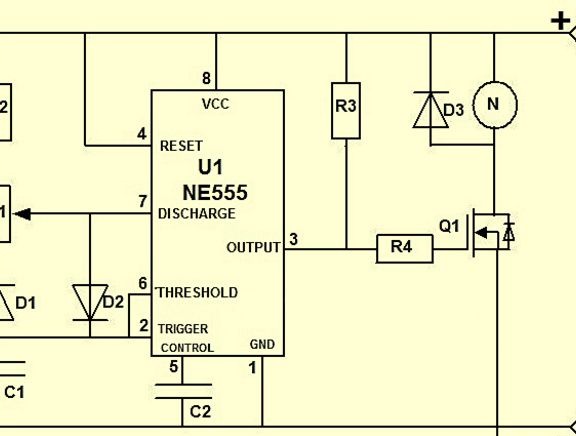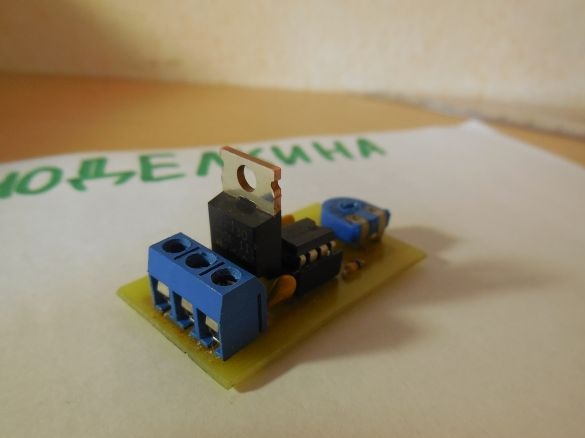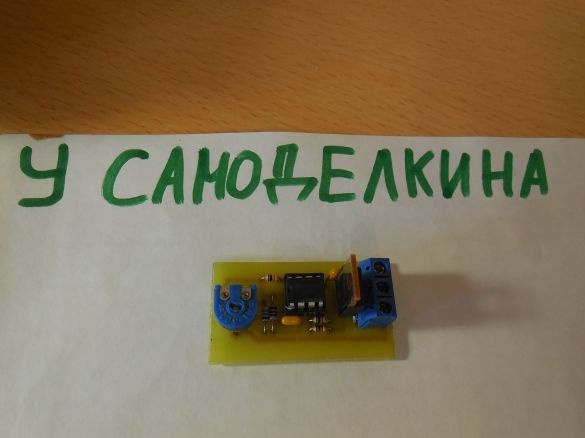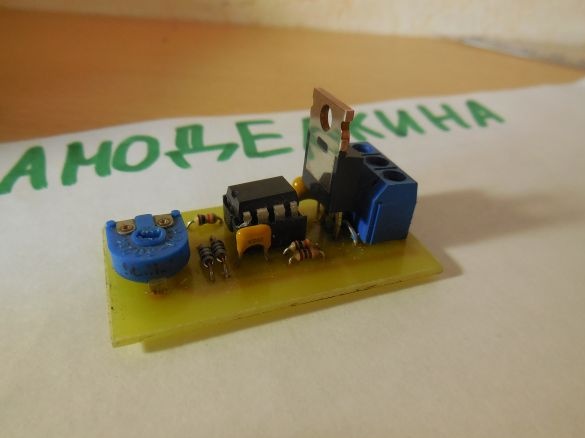In amateur radio practice, it is often necessary to regulate the power of a device. Be it a drilling machine, LED strip, an ordinary light bulb or some kind of heater. You can use a linear adjustable stabilizer, but it requires a decent heatsink under heavy load. And it’s not rational to spend precious energy in heat. Recently, the so-called PWM controllers, which also allow you to adjust the power, but without the release of external thermal energy, have gained particular popularity. The abbreviation PWM stands for Pulse Width Modulation. The principle of operation of such a regulator is clearly shown in the figure:

At the same time, the frequency of the PWM signal lies in the range of 20-40 kHz, which is outside the range of human hearing, so the regulator works silently. A variable resistor allows you to change the duty cycle of the pulses, thereby regulating the voltage supplied to the load.
The schematic diagram is presented below:

The ratings on it are as follows:
• R2 - 1 kOhm
• R3 - 1 kOhm
• R4 - 100 Ohms
• C1 - 2.7 nF
• C2 - 1 nF
• D3 - 1n4007
• D1 - 1n4148
• D2 - 1n4148
• R1 - 50 kOhm (variable resistor)
• Q1 - IRFZ44N
The supply voltage of the circuit is 12 volts, so it is convenient to use it in the automotive electrical network.
The key link in the circuit is the NE555 microcircuit, which forms rectangular pulses. It controls the field effect transistor Q1, which in turn controls the load. Any field effect transistor can be used here, for example, IRFZ44N, IRF740, IRF730, IRF630 or similar, suitable for current. Diodes are also any low-power, the values of resistors and capacitors can deviate widely. The frequency of the PWM controller depends primarily on the capacitor C1, an increase in its capacity will lead to a decrease in frequency. If it falls within the range of a person’s ears, the circuit will start to make an unpleasant whistle. For the stability of the circuit, it is better to use film capacitors, it is enough to take resistors with a power of 0.125 watts. The field effect transistor in this circuit should not be heated, because it is either in a fully open state or in a closed state.If its heating occurs, it means that it is not opened, then you should check the circuit for correct assembly.
The adjustment in this scheme is minus, i.e. plus power circuits and plus power loads are connected, and minus are connected to different terminals on the board. Have a nice build!
The circuit board is in this archive:
Photo of the controller I collected:






